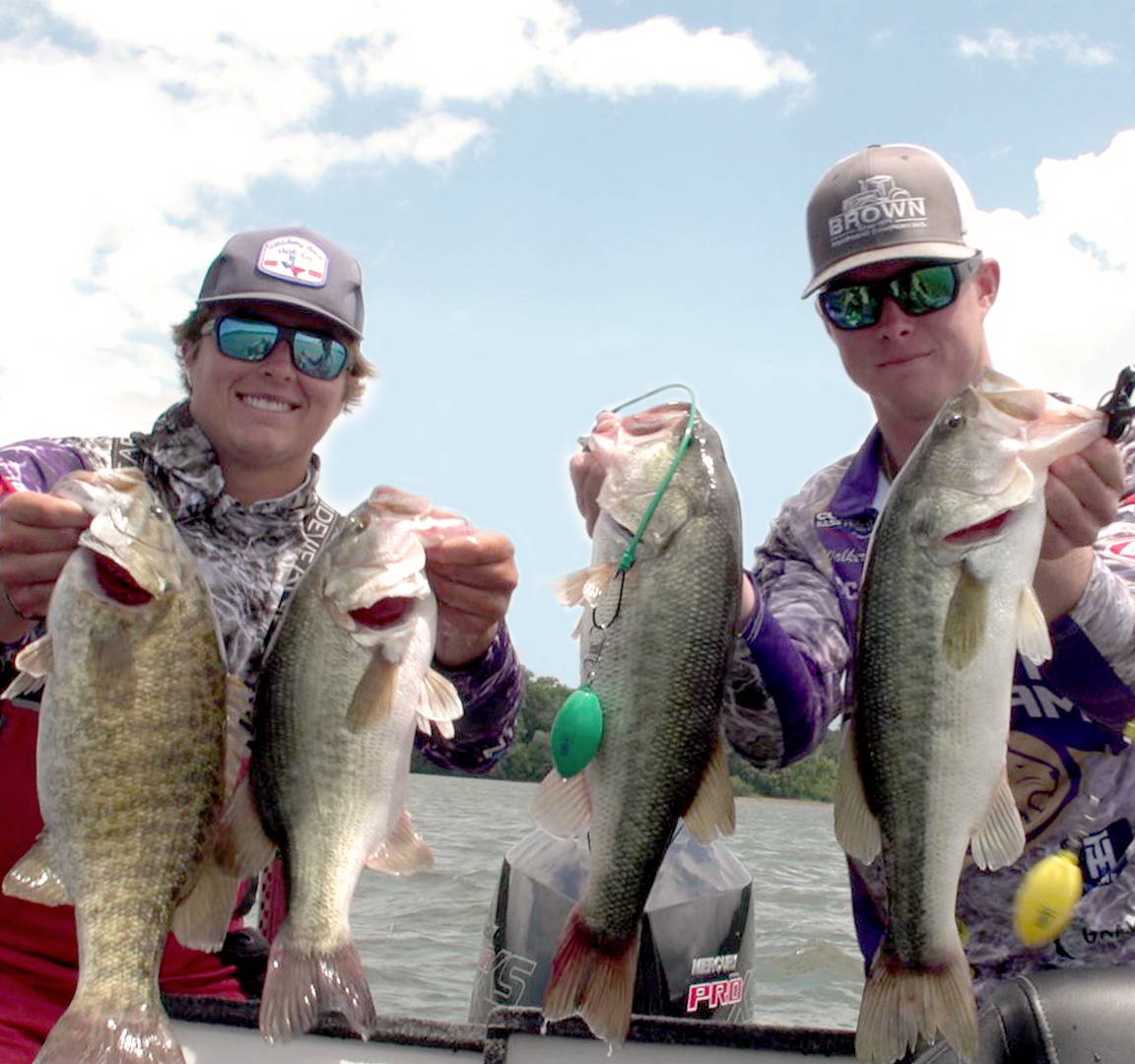For those of us who are seasoned anglers, it’s our job to pass on what we know to the next generation, and thankfully, they can teach us, too! As a testament to that, our friends at CareCo teamed up with some young lunker-hunters during the Bass Pro Shops Collegiate Bass Fishing Series, where they recommended warm weather fishing equipment that they trust, along with several conservation tips, too.

Rookie Anglers, Vital Warm Weather Fishing Equipment, and Conservation Q&A
Conservation Advice from the Collegiate Bass Fishing Crew
Especially as anglers, we have an important job when we’re enjoying what the outdoors have to offer: Protect the Resources.
Tournament requirements have come to reflect this more and more over time, but it also affects what we choose to do and what type of fishing equipment we use, too. Thankfully, CareCo and Collegiate Bass Anglers are committed to learning these best practices and sharing them, so here are some questions and answers to help us all make sure these fish populations are there to enjoy time and again.
Q: When should I use ice?
A: Put a bag of ice in your livewell right from the start of your day. This helps make sure the livewell’s surfaces aren’t just going to warm up the water you pump in for your fish. When it’s time to pump water into the livewell, leave about half that ice in there and keep the rest in the bag in a cooler. This should make sure the livewell is cool while leaving you some ice to use later, too.
Q: When should I pull in livewell water?
A: With your livewell additive at the ready, pull in your water as you’re getting in place for your first cast. Then, when you get your first fish in, you can be sure the livewell is cooled down, filled up, and ready to go. Your next step will be to recirculate and refresh that water, and you can always drain some or all of the water if needed, too, especially if you strike out at that first spot and you don’t want to expend the fuel to transport the water to the next area.
Q: Should I not flip fish into the boat?
A: Many anglers go by the rule of flipping dinks and lipping (or netting) the rest. Ultimately though, every fish is better off if they aren’t slammed into any surfaces or had their slime coat rub off inside the boat. With the fish’s survival (and tournament money on the line), it’s crucial to minimize stress on the fish, so be careful.
Q: What Other Fish Handling Tips should I know?
A: Generally, the less handling the better, but since the fish have to be brought into the boat, considered for culling, bagged, and brought to weigh-ins, anglers should always take precautions to reduce major stresses on the fish (time out of water, unnecessary handling, livewell space, warm temperatures, loss of slime coat, lack of oxygen, etc).
It also helps to be aware of the signs of stress and injury present in these fish, including: regurgitation, difficulty staying belly down and submerged, bloody fins and extremities, fin damage, dorsal fins that won't stay up, agitated hook wounds or jaw separation, discoloration in the eyes (gas present in the eye), eyes swelling or protruding out of orbit, limpness and extreme signs of fatigue, swollen or tight abdomen, or a swelling throat protruding into the mouth.
If you want to get into the scientific study of it all, this article is a good read, but the bottom line is that there are some extremes to avoid and signs to watch so the fish survive.
Q: How do I use my cull system effectively?
A: Cull systems should be designed to be simple and trouble-free, that’s why the Conservation Cull has color coded strings and floats, clips that open easy and hold tight, and a comfort-grip balance beam to quickly show which fish is heavier.
Even so, there are several useful tips that successful rookies learn so they can take their tournament fishing to the next level. Here are a few to keep in mind about this game-changing piece of tournament fishing equipment:
- Install your cull system rack near your livewell: this helps reduce the time your fish are out of water and it gets you back to fishing quicker.
- Decide on your own system of quickly identifying your bigger and smaller fish. Examples of this are: designating certain color tags for smaller fish, numbering them, or only tagging your smaller fish
- Securely place the cull system clip behind the thickest, frontal point of the fish’s lower jaw and gauge how secure it is before putting the fish on the beam or in the livewell
- Steady the fish as much as you can before you pull up the cull system for them to hang free
Q: Should I pull fish up and out of the livewell using the cull system string?
A: T-H Marine non-piercing cull clips are made to be strong and gentle on fish, but we still recommend pulling them up by the lip from the livewell. This reduces the time they spend hanging from the clips and it reduces the chance they’ll drop or drag against a surface that will reduce their slime coat.
What Conservation-Minded Fishing Equipment and Best Practices Do You Use?
We’d bet there are countless tips out there from anglers like you, so what would you share with a rookie angler? Let us know on social media!
For those of you who are newer anglers, do you have everything you need to conserve the fisheries that you’re pulling from? If not, be sure to check out the trusted gear listed below.






